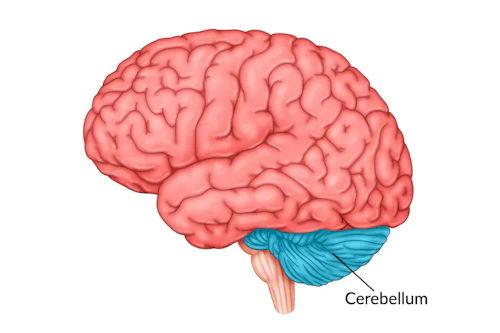
An Empty, Receptive, Trained Brain is Your Best Natural Weapon
This message will resonate especially for those who have trained for some time in sports, and especially in martial arts, boxing, or similar endeavors. However, for any Tai Chi Chuan practitioner it will point out a direction and framework for understanding how practice benefits the individual in sports and specifically martial arts. The information also points to how well-directed and well-understood training can help us to move through each day without building up tension in the brain and body, and more.
The key part of the brain that is trained through sports training, including Tai Chi Chuan training, is the cerebellum. Far from being a “lizard brain” as it has been nicknamed, science has discovered that the cerebellum is crucial for smooth, accurate movement, sequences of movement, and even in logical thinking and sequential reasoning.
When a person learns to ride a bicycle or play scales on a piano, that knowledge resides in the cerebellum. We will see why that matters.
Many ideas in the realm of sports training sound good, and are good in theory. We can take a six-week class in self-defense and learn wonderful techniques. The problem is that, when faced with a competition or a genuine fight, we are likely to be outmatched due to the other person’s speed and power, if they have more extensive experience.
This is not muscle power we are talking about, although muscles are helpful in certain ways, but we are talking about the ability to respond to a competitive situation—or if catching a falling object or if threatened with falling down oneself—1) with speed, 2) with the energy of one’s whole body, and 3) without generating tension. Let’s look at each of these aspects.
1) Speed is a result of motion directed by the cerebellum. Molecular Layer Interneurons (MLIs) are neurons in the cerebellum that modulate the activity of the Purkinje neurons, which are deeper in the cerebellum. According to a Science Direct research article, all MLIs are fast-spiking interneurons that can fire action potentials at speeds of up to 300 Hz (300 firings per second). That speed allows a far faster response than the cerebrum can offer!
2) In order to have access to the energy of your whole body, proper training in Tai Chi Chuan, starting from the slow movements of the Yang-style form and continuing with push-hands and sanshou (boxing) practice. This trains the neurons of the cerebellum to respond fully and with the whole body aligned, including the crucial use of the force of the toes and legs conveyed efficiently through the mid-section, ribs, and out through the knuckles or fingers.
The cerebellum, with the help of the high-speed MLIs, is able to model and rapidly recreate various angles and speeds when engaging in contact with another person, while not losing the benefit of connecting fully with the ground and expanding that energy to the knuckles and fingers (or feet) as appropriate. The cerebrum, wonderful as it is, cannot respond as quickly, accurately, and fully as movement directed by the cerebellum. When individuals have damage to the cerebellum, their movements are uneven and not well coordinated. They resemble that of a drunk individual (alcohol affects the cerebellum).
3) Tension is a result of conflicting thoughts, whether those thoughts are in consciousness or are unconscious. According to research, gradual training in Tai Chi Chuan without tension and with the mental focus turned inwards, allows the brain to drop excess thinking that stimulates excess and inappropriate neuron activations, and enables more strongly the firing of needed neurons. The result is focused, accurate movement without tension associated with activation of the wrong muscles.
****************

So we have already seen that training the cerebellum is necessary if we want speedy, coordinated, and frictionless action. And because the cerebellum acts outside of the conscious mind (which is fundamentally in the cerebrum), we are often surprised at speed and accuracy of our movements.
I have discussed in classes a simple result of training in Tai Chi Chuan: if an object falls off a table, a long-time practitioner can catch it very quickly and without fumbling. Various students have also had that experience. When the conscious mind does not distract, we can suddenly reach to catch a falling object, or avoid falling ourselves. In one case, a practitioner who is also in a “hard style” martial art was able to catch a fist heading towards his head in his taekwondo class, and was surprised by his own effective action.
In push-hands and sanshou sparring, we are constantly facing new situations: new directions, speed, timing, etc. Only the cerebellum has the capacity to respond quickly and effectively, and then to move on to the next thing without tension. The same brain training allows us to avoid falling due to fluid response to imbalance, and allows us to go through a busy day without tensing up shoulders or torso.
For speedy, powerful, and flowing movement in everyday situations, and in push-hands or sanshou practice, there is no substitute for repeated, long-term training in a variety of movements, positions, and speeds; that is why we practice with each other. The variety that arises in practicing provides the necessary raw materials to feed the natural intelligence of the brain and particularly the cerebellum, allowing it to build up an optimal set of responses to almost any situation.
The result is your best natural weapon for martial arts, and a real asset for minimizing stress in everyday life: the empty, receptive, trained brain.
